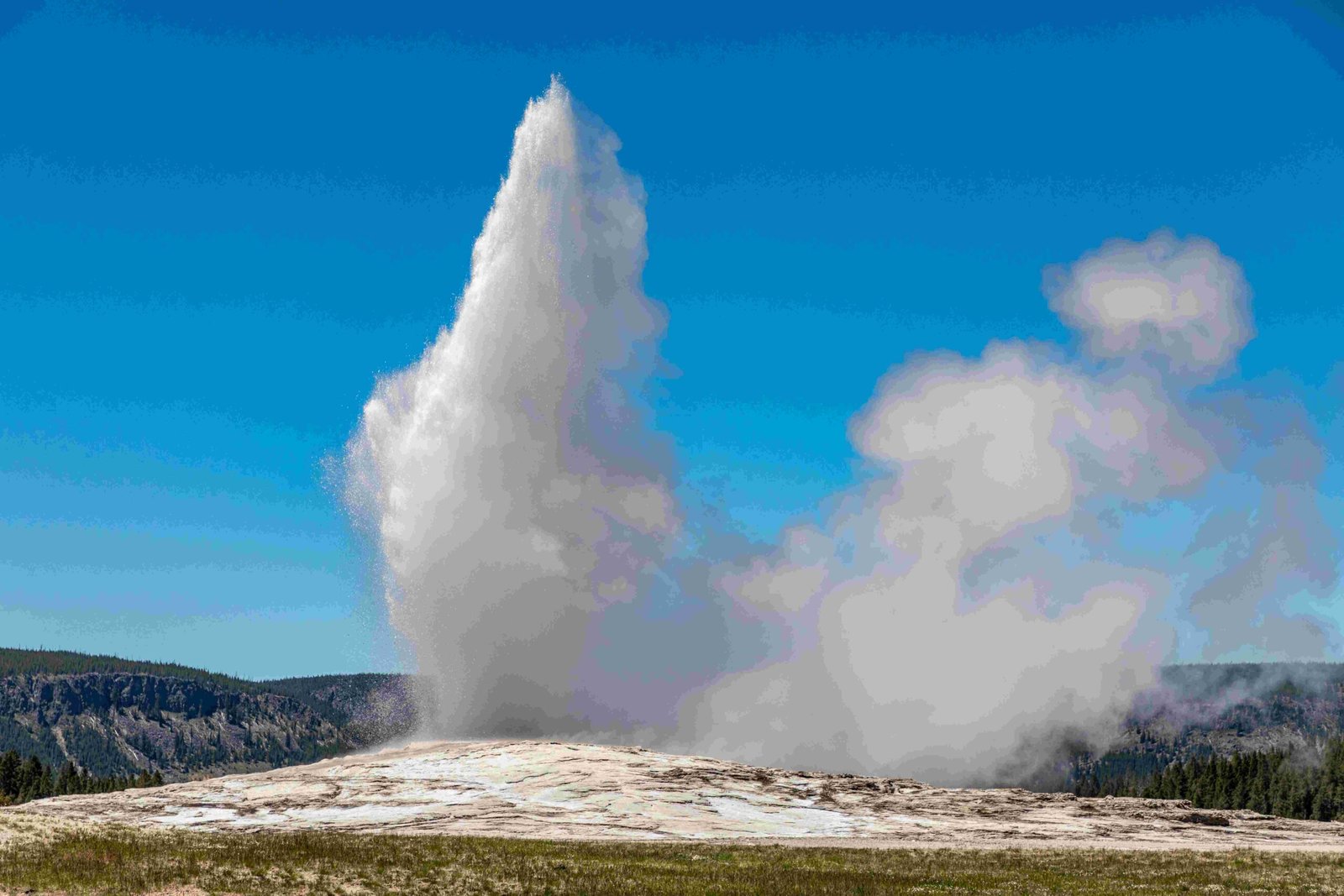Choosing between Glacier National Park and Yellowstone National Park can be challenging for nature enthusiasts. Both parks offer unique experiences, stunning landscapes, and diverse wildlife. Glacier is known for its rugged mountains and pristine lakes, while Yellowstone boasts geothermal wonders and vast ecosystems. This guide will help you decide which park is better to visit based on your preferences, the time of year, and what each park has to offer.
Which Park Offers More Diverse Landscapes?

Both Glacier and Yellowstone National Parks offer breathtaking landscapes, but they differ significantly in their terrain and natural features.
Glacier National Park:
- Known as the “Crown of the Continent”
- Features 762 lakes and 746 miles of trails
- Characterized by tall, jutting mountains and massive glaciers
- Offers a more rugged and wild feel with steep, rocky terrain and dense forests
Yellowstone National Park:
- Home to over 500 active geysers, including the famous Old Faithful
- Boasts 290 waterfalls and the impressive Grand Canyon of the Yellowstone
- Known for its wide-open spaces, big rivers, and unique geothermal features
- Offers a more varied landscape with hot springs, mud pots, and fumaroles
When Is the Best Time to Visit Each Park?

The ideal time to visit these parks depends on your preferences for weather, activities, and crowd levels.
Glacier National Park:
- Best Time: Summer (July-August) and early fall (September)
- Weather: Mild summers, harsh winters with many facilities closed
- Peak Season: July and August
- Tip: Visit in September for fewer crowds and good hiking conditions
Yellowstone National Park:
- Best Time: Varies based on preferences
- Summer (June-August): Peak season, warm weather, full access to attractions
- Spring/Fall (April-May/September-October): Fewer crowds, mild weather
- Winter: Unique serene experience, limited access
- Tip: Visit during shoulder seasons for a balance of good weather and fewer tourists
What Wildlife Can You Expect to See?
Both parks offer excellent wildlife viewing opportunities, but the experience differs in each location.
Glacier National Park:
- More immersive wildlife experience
- Common sightings: Mountain goats, bighorn sheep, moose, grizzly and black bears
- Occasional sightings: Elk and mule deer
- Best times: Early morning and late evening
- Popular locations: Many Glacier area, Logan Pass, trails around Lake McDonald
Yellowstone National Park:
- Easier access to wildlife viewing, often from vehicles
- Common sightings: Elk, antelope, bison, grizzly and black bears, wolves, raptors
- Best times: Early morning and late evening
- Popular locations: Lamar Valley, Hayden Valley, along the Grand Loop Road
How Accessible Are the Parks During Peak Seasons?
Accessibility varies between the two parks, which can impact your visit during busy times.
Glacier National Park:
- Limited paved roads (only Going-to-the-Sun Road transects the park)
- More geared towards hikers and backpackers
- Closed during winter months
- Best for those seeking a more remote, wilderness experience
Yellowstone National Park:
- 370 miles of paved roads, including the Grand Loop Road
- More accessible by motor vehicles
- Open year-round, offering winter experiences
- Can feel crowded during peak season, especially around popular attractions
What Are the Key Attractions in Each Park?
Both parks offer unique attractions that draw millions of visitors each year.
Glacier National Park:
- Going-to-the-Sun Road
- Many Glacier area
- Lake McDonald
- Logan Pass
- Highline Trail
Yellowstone National Park:
- Old Faithful Geyser
- Grand Prismatic Spring
- Grand Canyon of the Yellowstone
- Lamar Valley
- Mammoth Hot Springs
What Are the Costs and Required Permits?
Understanding the costs and permit requirements can help you plan your visit more effectively.
Glacier National Park:
- Entrance Fee: $35 per vehicle (7-day pass)
- Backcountry Permits: Required for overnight camping, available at visitor centers
- Guided Tours: Various options available, some with additional fees
Yellowstone National Park:
- Entrance Fee: $35 per vehicle (7-day pass)
- Backcountry Permits: Required for overnight backpacking, available through the backcountry office
- Guided Tours: Ranger-led hikes and wildlife tours available, some with extra costs
What Are the Wildlife Viewing Guidelines?
Both parks have strict guidelines to ensure the safety of visitors and wildlife.
For Both Parks:
- Maintain safe distances: 100 yards for bears and wolves, 25 yards for other animals
- Do not feed or approach wildlife
- Make noise while hiking to avoid surprising animals
- Follow park ranger instructions and posted guidelines
Which Park Is Better for Families with Children?
The choice between Glacier and Yellowstone for families depends on various factors:
Glacier National Park:
- More challenging terrain, better for families with older children
- Offers Junior Ranger programs and guided hikes
- Limited amenities in some areas
Yellowstone National Park:
- More accessible attractions, suitable for families with younger children
- Offers a wider range of educational programs and visitor centers
- More developed infrastructure and amenities
In conclusion, both Glacier and Yellowstone National Parks offer unique and unforgettable experiences. Your choice depends on your preferences for landscapes, wildlife, accessibility, and the type of adventure you seek. Whichever park you choose, you’re guaranteed to witness some of America’s most stunning natural wonders.
References:
1. National Parks: Yellowstone versus Glacier
2. Does Glacier’s wildlife compare to Yellowstone?
3. Yellowstone Vs Glacier: Which National Park Is Right for You?

